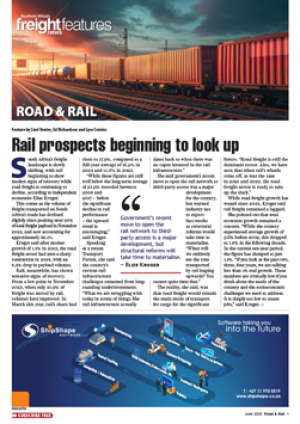Bigger isn’t always better, the familiar refrain goes, but in warehousing terms it couldn’t be further from the truth.
In fact bigger and better equipped warehouses using longer-lasting cutting edge technologies go hand-inhand with the desire to be more efficient through improved systems and services with the ultimate aim of faster throughput.
“It’s all based on the worldwide trend of immediacy,” said logistics expert Martin Bailey of Industrial Logistics Systems. This growing consumer attitude of “I want it and I want it now” increasingly drives the supply chain industry which is looking at all manner and means to work increased momentum into the effective movement of goods.
These days it was nothing new to have warehouses of 20 metres and higher, Bailey said. “When I started in this business,” and it’s widely agreed that he’s a supply chain stalwart of sorts, “we wouldn’t go higher than nine metres. Now we tell people not to build lower than 20 metres because of shelves going up to 17 metres and reach trucks that are capable of going up to 14 metres.”
Anything lower, Bailey warned, would probably not be able to accommodate the kind of hoisters and lifters that were envisioned for the future of warehousing. In some instances, super warehouses of up to 50 metres using hi-tech architectural alternatives to old-fashioned conventional construction methods, appear ever more likely.
“Nowadays we are capable of building things faster,” Bailey said. “We increasingly use pre-built tilt-up panels instead of usual brick work, a warehousing construction method that can save as much as 30% on conventional construction time.”
Referring to a recent project in Dubai worked on by his company, Bailey trotted out some impressive specs. The massive freezing facility can handle 75 000 pallets and easily cools to 40 degrees below despite soaring outside temperatures of 50 degrees desert heat made worse by 100% humidity. But that’s the bigger picture, an almost bird’s eye view impression of where things are headed in the warehousing business. Closer to the ground, it’s almost a case of business as usual.
“Flat floors are still a problem,” Bailey said on the point of surface seams and the maintenance issues that rigid joints pose to machinery over time. “One of the most difficult things when building warehouses is to try to convince construction companies to spend more time on joints because we would have lower maintenance costs on our forklifts.” Standing in front of an image depicting an immense sports arena during a recent presentation on warehousing trends, Bailey offered up an anecdote to prove the point.
“Whenever we build warehouses civil engineers are always telling us that we are trying for too big a span. But then I remind them that there are places in the world, such as this stadium belonging to the Dallas Cowboys, with a span of 150 metres. So don’t tell me I can’t have a span of 30 metres.”
Progressive thinking, in Bailey's view, such as the use of LED lights that use passives to switch off when people aren’t around, and skylights in warehouses to minimise electricity spent on lighting, has made the future of warehousing bigger, better, and brighter.
Using tilt-up panels instead of usual brick work can save as much as 30% on conventional construction time. – Martin Bailey

